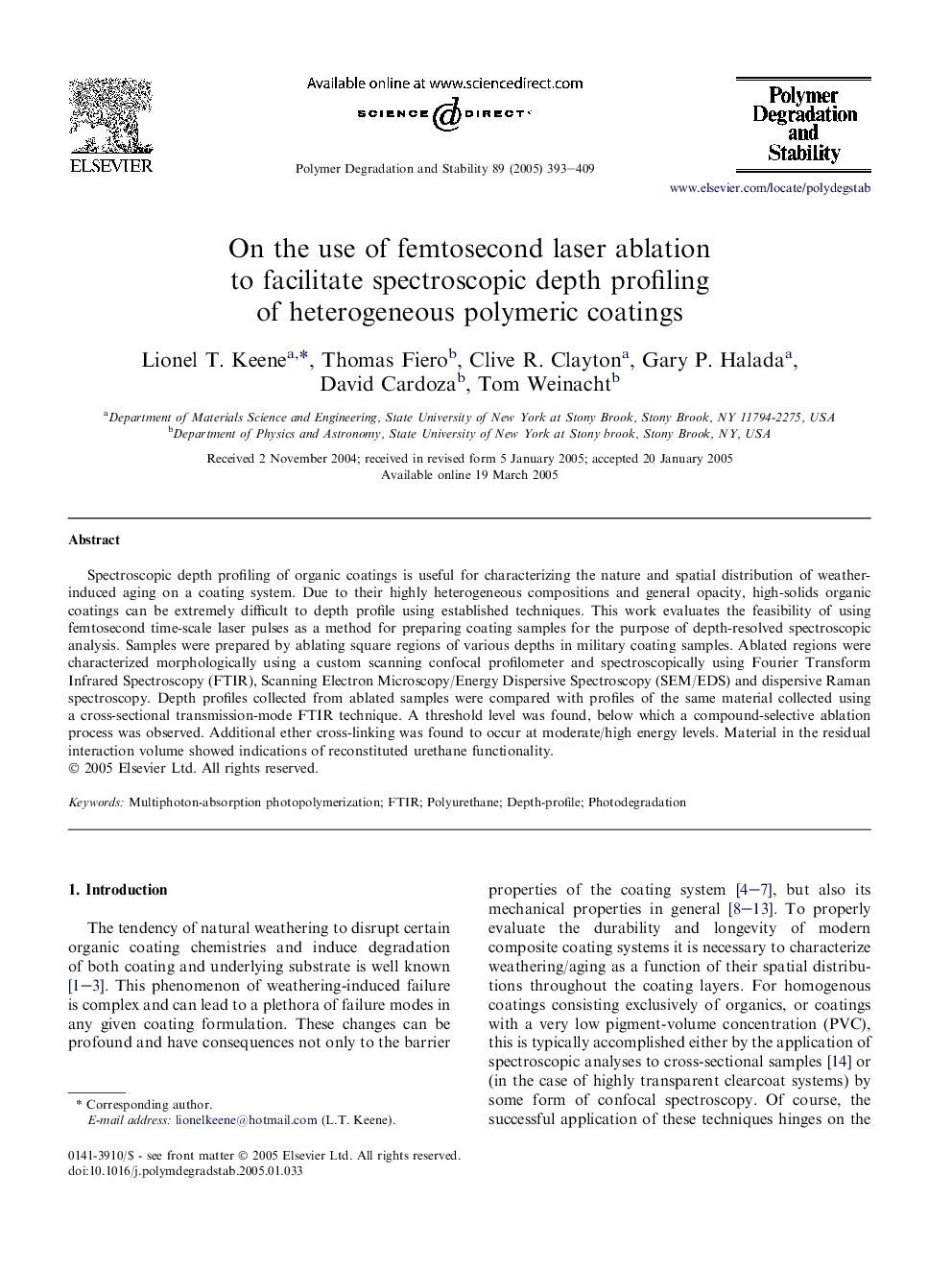| Article ID | Journal | Published Year | Pages | File Type |
|---|---|---|---|---|
| 9560717 | Polymer Degradation and Stability | 2005 | 17 Pages |
Abstract
Spectroscopic depth profiling of organic coatings is useful for characterizing the nature and spatial distribution of weather-induced aging on a coating system. Due to their highly heterogeneous compositions and general opacity, high-solids organic coatings can be extremely difficult to depth profile using established techniques. This work evaluates the feasibility of using femtosecond time-scale laser pulses as a method for preparing coating samples for the purpose of depth-resolved spectroscopic analysis. Samples were prepared by ablating square regions of various depths in military coating samples. Ablated regions were characterized morphologically using a custom scanning confocal profilometer and spectroscopically using Fourier Transform Infrared Spectroscopy (FTIR), Scanning Electron Microscopy/Energy Dispersive Spectroscopy (SEM/EDS) and dispersive Raman spectroscopy. Depth profiles collected from ablated samples were compared with profiles of the same material collected using a cross-sectional transmission-mode FTIR technique. A threshold level was found, below which a compound-selective ablation process was observed. Additional ether cross-linking was found to occur at moderate/high energy levels. Material in the residual interaction volume showed indications of reconstituted urethane functionality.
Related Topics
Physical Sciences and Engineering
Chemistry
Organic Chemistry
Authors
Lionel T. Keene, Thomas Fiero, Clive R. Clayton, Gary P. Halada, David Cardoza, Tom Weinacht,
